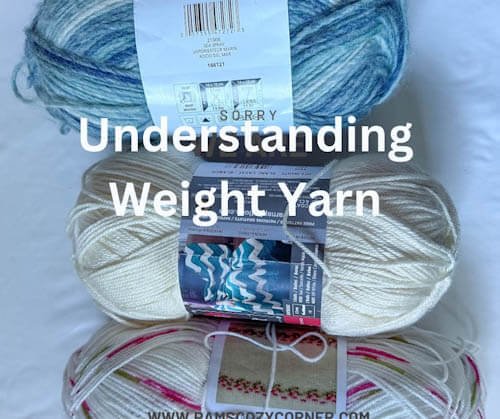Unlock Your Potential: Practical Steps for a Thriving Crochet/Knit Business
This is it—the final part of my series on the things I wish I knew before starting my crochet and knit business. In the first two parts of this series, we talked about the realities of turning your passion into a business. We covered everything from building an audience to understanding finances. But now, it’s time to get down to the actionable steps that genuinely made a difference in my own journey. If you’ve ever felt overwhelmed by all the “shoulds” of running a craft business, this post is for you. We’re diving into the practical changes and mindset shifts that transformed my creative hustle into a sustainable, enjoyable venture.
If you missed the first two part of things I wish I knew before starting my crochet and knit business, you can check out PART 1 and PART 2 before you read part 3.
Today in Part 3 of “Things I Wish I Knew Before Starting My Crochet/Knit Business!”, we’re going to get down to the actionable steps and crucial mindset shifts that truly transformed my entrepreneurial journey. These aren’t just ideas; they’re the practical shifts that made all the difference.
22. Implement Systems & Automation
(Your Future Self Will Thank You!)
When I started, I was doing everything manually. Every email, every order, every social media post was a one-off task. This quickly became unsustainable, especially when my business started to grow. The biggest game-changer was implementing systems and automation.
-
- Email Marketing Automation: Set up automated welcome sequences for new subscribers, abandoned cart reminders, and post-purchase thank-you emails. Tools like ConvertKit, MailerLite, or Flodesk can handle this for you. This builds relationships without constant manual effort.
-
- Order Fulfillment: Use platforms like Shopify or Etsy that streamline order processing, shipping label creation, and tracking notifications. Consider using a service for printing labels if your volume is high.
-
- Social Media Scheduling: As I mentioned in Part 2, don’t let social media consume you. Utilize scheduling tools (Meta Business Suite for Instagram/Facebook, Tailwind for Pinterest) to plan your content in advance. Batch your content creation and schedule a week or even a month’s worth of posts at once.
-
- Inventory Management: Whether it’s a simple spreadsheet or dedicated software, track your yarn, finished products, and supplies. Knowing what you have on hand saves time and prevents overstocking or running out of popular items.
By automating repetitive tasks, you free up invaluable time for what you love most: designing, creating, and connecting with your audience.
23. Embrace Imperfection & Iteration
(Done is Better Than Perfect)
This was a tough one for me. As makers, we strive for perfection in every stitch. However, in business, waiting for “perfect” can mean never launching. I spent far too long tweaking patterns, photos, and website layouts, delaying releases because I was worried they weren’t flawless.
-
- Launch and Learn: Instead of striving for absolute perfection, focus on “good enough” to launch, then gather feedback and iterate. Your audience’s input is far more valuable than your internal perfectionism.
-
- Embrace Mistakes as Learning Opportunities: Every “flaw” or “failure” is a chance to learn and improve. Did a pattern confuse someone? That’s a chance to clarify. Did a product not sell as well as expected? Time to analyze why.
-
- Progress Over Perfection: Celebrate progress, no matter how small. A finished pattern, even if it has a typo you’ll fix later, is miles ahead of a perfect pattern that’s still in your head.
-
- Iterate Regularly: Your products, patterns, and processes don’t have to be perfect from day one. Plan to revisit and refine them based on customer feedback and your own growth.
This mindset shift alone lifted a huge weight from my shoulders and allowed me to actually do things instead of just planning them.
24. Value Your Time & Set Boundaries (Prevent Burnout Before It Starts)
The passion for crochet and knitting can easily lead to working endless hours, especially when it’s your business. I learned the hard way that not valuing my time and failing to set boundaries led straight to burnout.
-
- Schedule Your Crafting & Business Time: Just like any other appointment, block out specific times for designing, creating, marketing, and administrative tasks.
-
- Define Your Working Hours: Decide when your “office” is open and when it’s closed. Communicate these boundaries to your customers and stick to them. It’s okay not to respond to emails at midnight!
-
- Learn to Say No: You don’t have to take on every custom order, collaboration, or request. Protect your time and energy for what truly aligns with your business goals.
-
- Prioritize Self-Care: Regularly schedule breaks, time away from your work, and activities that recharge you. A well-rested maker is a more creative and productive maker.
-
- Outsource When Necessary: As your business grows, identify tasks you can delegate or outsource (e.g., advanced bookkeeping, graphic design, social media management) if it frees you up for more high-value activities.
Remember, your business thrives when you thrive. Prioritizing your well-being isn’t selfish; it’s essential for long-term success.
25. Implement Effective Marketing Strategies
(Go Beyond Just Posting)
While social media is a tool, a strategy ties it all together. Simply “posting” isn’t enough; you need a plan for how you’ll reach your ideal customers and compel them to act.
-
- Understand Your Ideal Customer: Who are you trying to reach? What are their needs, where do they spend time online, and what motivates them to buy? This informs all your marketing decisions.
-
- Content Pillars: Don’t just sell. Create content that educates, inspires, entertains, and connects. Think tutorials, behind-the-scenes, styling tips, or stories about your creative process.
-
- Email List is King: Your email list is a direct line to your most engaged audience, independent of social media algorithms. Offer incentives to subscribe and nurture this list with valuable content and exclusive offers.
-
- SEO Basics: For your website or Etsy shop, learn the fundamentals of Search Engine Optimization. Use keywords your ideal customers are searching for in your product titles, descriptions, and blog posts to help them find you organically.
-
- Diverse Marketing Channels: Beyond social media, consider Etsy ads, Pinterest ads, collaborations, guest blogging, or even local craft fairs. Don’t put all your eggs in one basket.
Effective marketing isn’t about being pushy; it’s about authentically connecting your beautiful creations with the people who will love them most.
26. Prioritize Customer Experience
(From First Click to Finished Project)
Your product might be beautiful, but the overall experience a customer has with your brand is what truly builds loyalty and word-of-mouth referrals. I learned that every interaction is a chance to shine.
-
- Clear Communication: Be prompt and professional in responding to inquiries, comments, and DMs. Clear communication sets expectations and builds trust.
-
- Detailed Product/Pattern Descriptions: Leave no stone unturned. Provide clear sizing, material recommendations, skill levels, and high-quality photos from multiple angles. For patterns, clear instructions and helpful schematics are crucial.
-
- Thoughtful Packaging: If selling physical items, elevate the unboxing experience. A handwritten thank-you note, branded tissue paper, or a small extra touch can make a big impression.
-
- Post-Purchase Support: Be available for questions after a sale, especially for patterns. A quick, helpful response to a struggling customer can turn a one-time buyer into a raving fan.
-
- Solicit and Act on Feedback: Actively encourage reviews and be genuinely open to both positive and constructive criticism. Your customers will tell you what they want and how you can improve.
A remarkable customer experience isn’t just about selling; it’s about building relationships and turning buyers into advocates.
27. Develop a Strong Personal Brand
(Show Your Unique Spark!)
In a crowded market, simply making pretty things isn’t enough. People connect with people. Developing a strong personal brand is about showcasing your unique personality, values, and the story behind your work.
-
- Define Your “Why”: Why do you crochet or knit? What do you hope to achieve with your business? Your “why” is your guiding star and resonates with your audience.
-
- Consistent Visuals: Develop a cohesive visual identity – your logo, color palette, fonts, and photography style. This makes your brand instantly recognizable across all platforms.
-
- Authentic Voice: Let your personality shine through in your captions, emails, and blog posts. Don’t try to be someone you’re not. Your unique voice is your superpower.
-
- Share Your Story: People love to know the person behind the handmade item. Share snippets of your creative process, your inspirations, and what you love about crafting.
-
- Curate Your Online Presence: Ensure your social media, website, and Etsy shop all reflect a consistent and professional brand image.
Your personal brand isn’t just a logo; it’s the feeling people get when they interact with you and your business. It’s what makes you unforgettable.
28. Don’t Build Alone
(Leverage Community & Mentorship)
One of my biggest regrets early on was trying to figure everything out by myself. The crochet and knitting community is incredibly supportive, and trying to go it alone is a recipe for frustration and slower growth.
-
- Join Online Communities: Facebook groups, Ravelry forums, or dedicated membership sites for craft business owners offer a wealth of knowledge, support, and networking opportunities.
-
- Find a Mentor or Coach: If possible, seek guidance from someone who has already achieved what you aspire to. Their insights can save you years of trial and error.
-
- Collaborate, Don’t Compete: Partner with other makers for blog hops, pattern bundles, or social media challenges. This exposes your work to new audiences and fosters a spirit of camaraderie.
-
- Attend Workshops & Conferences: Learn new skills, get inspired, and connect with peers and industry experts.
-
- Ask for Help: Don’t be afraid to reach out when you’re stuck, whether it’s for technical advice, creative feedback, or just a sounding board.
Remember, a rising tide lifts all boats. Building connections will always take you further than isolated competition.
29. Focus on the Right Audience (Not Just Any Audience)
Early on, I tried to appeal to everyone, thinking more eyeballs meant more sales. The truth is, a broad audience can lead to very few dedicated customers. The game-changer was narrowing my focus to my ideal customer.
-
- Define Your Niche: Who is your crochet or knitwear really for? Busy moms? Fashion-forward teens? Eco-conscious home decorators? Knowing this helps tailor your designs, marketing, and messaging.
-
- Speak Their Language: Once you know your audience, create content that directly addresses their needs, desires, and pain points.
-
- Where Do They Hang Out? Instead of being on every platform, focus your marketing efforts where your ideal customers are most active.
-
- Tailor Your Products: Your designs should solve a problem or fulfill a desire for your specific audience. If they’re busy moms, “quick and easy” patterns will resonate more than complex, time-consuming ones.
-
- Quality Over Quantity of Followers: It’s better to have 1,000 highly engaged followers who genuinely love your work and buy from you than 10,000 disengaged followers who never convert.
A focused approach attracts the right people, leading to stronger connections and more consistent sales.
30. Embrace Marketing—Your Way
(Authenticity Sells)
Marketing can feel intimidating, especially for creatives who just want to make. But ignoring it means your beautiful work won’t find its audience. The key is to find your way to market, one that feels authentic and aligned with your personality.
-
- Don’t Force It: If you hate making Reels, don’t force yourself to do them. If you love writing, lean into blogging. Find the marketing methods that you genuinely enjoy and can be consistent with.
-
- Educate and Inspire: Marketing isn’t always about a hard sell. Share valuable tips, teach a small technique, or inspire with styling ideas. This builds trust and positions you as an expert.
-
- Tell Your Story: People buy from people. Share the “why” behind your creations, your inspiration, and your journey. This authentic connection is powerful.
-
- Show, Don’t Just Tell: Use high-quality photos and videos to showcase your work. Let the beauty of your crochet and knitting speak for itself.
-
- Be Consistent (Authentically): Pick a schedule you can maintain for your chosen marketing channels, and stick to it. Your audience will learn to expect your content.
When marketing feels natural and enjoyable, it stops being a chore and becomes another creative outlet for your business.
The Bottom Line
Turning your love for crochet and knitting into a business is a rewarding journey filled with creativity, challenges, and growth. These 27 lessons, learned through experience and shared across this series, can save you time, energy, and frustration as you build your dream business.
Remember, your passion for crochet and knitting is what makes your business unique. Stay true to your vision, implement these practical steps, and cultivate a resilient mindset. Success will follow!
22. Implement Systems & Automation (Your Future Self Will Thank You!)
When I started, I was doing everything manually. Every email, every order, every social media post was a one-off task. This quickly became unsustainable, especially when my business started to grow. The biggest game-changer was implementing systems and automation.
-
- Email Marketing Automation: Set up automated welcome sequences for new subscribers, abandoned cart reminders, and post-purchase thank-you emails. Tools like ConvertKit, MailerLite, or Flodesk can handle this for you. This builds relationships without constant manual effort.
-
- Order Fulfillment: Use platforms like Shopify or Etsy that streamline order processing, shipping label creation, and tracking notifications. Consider using a service for printing labels if your volume is high.
-
- Social Media Scheduling: As I mentioned in Part 2, don’t let social media consume you. Utilize scheduling tools (Meta Business Suite for Instagram/Facebook, Tailwind for Pinterest) to plan your content in advance. Batch your content creation and schedule a week or even a month’s worth of posts at once.
-
- Inventory Management: Whether it’s a simple spreadsheet or dedicated software, track your yarn, finished products, and supplies. Knowing what you have on hand saves time and prevents overstocking or running out of popular items.
By automating repetitive tasks, you free up invaluable time for what you love most: designing, creating, and connecting with your audience.





